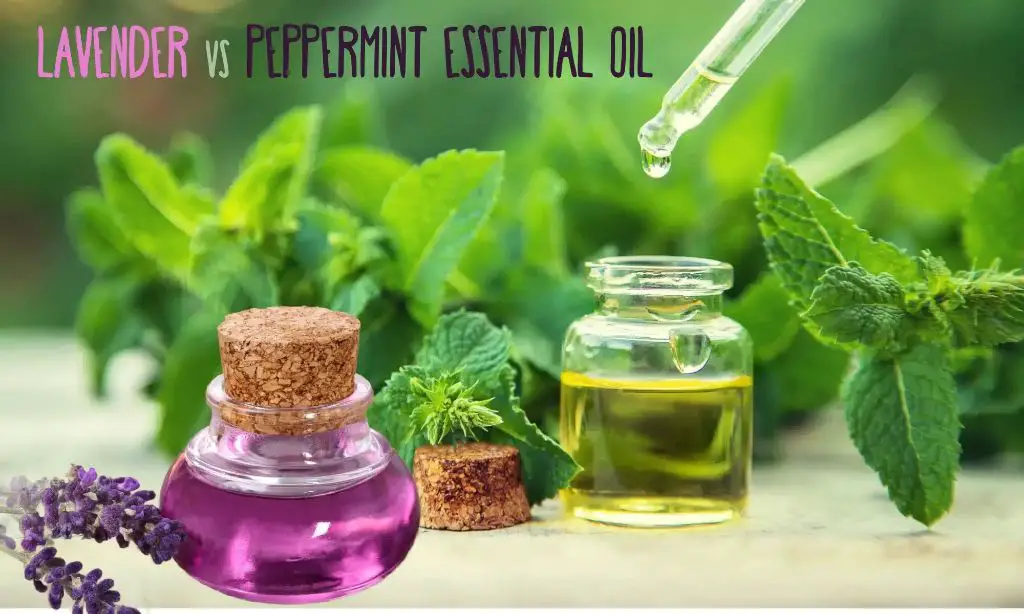Are Essential Oils Safer Than Perfume?
Introducing Essential Oils and Perfume
Essential oils are highly concentrated extracts derived from the leaves, stems, flowers, bark, roots, or other parts of plants. They contain the “essence” of the plant’s fragrance and provide a wide range of potential benefits (1). Popular essential oils include lavender, peppermint, eucalyptus, bergamot, and tea tree oil.
Perfumes contain fragrant essential oils but also include other ingredients like fixatives to help the scent last longer, and carrier oils to dilute the essential oils. The concentration of essential oils in perfumes can range from 5-20% for eau de cologne to 15-40% for parfum (2). Perfumes are popular personal care products and part of a multi-billion dollar industry. They are used by both men and women for their pleasing aromas.
How Essential Oils and Perfumes Are Made
Essential oils are extracted from plants using a few different methods. Steam distillation is the most common method, where steam is passed through plant material, causing the oils to evaporate out. The oils are then collected and condensed back to liquid form. Other methods include solvent extraction, where solvents like hexane are used to dissolve the oils out of plant material, and cold pressing, where plant parts like citrus peels are mechanically pressed until the oils are released.
Perfumes are created synthetically in a laboratory. Fragrances are composed by blending ingredients like synthetic aroma compounds, fixatives, and carrier substances. These synthesized fragrance mixtures allow perfumers to have precise control over the scent rather than relying on naturally extracted oils. Modern perfumes use both synthetic and natural ingredients to create complex, unique fragrances not found in nature.
Sources:
https://www.newdirectionsaromatics.com/blog/articles/how-essential-oils-are-made.html,
https://www.customprocessingservices.com/blog/top-4-ways-to-extract-essential-oils-from-plants

Potential Health Benefits of Essential Oils
Essential oils can provide various health benefits when used properly. Research shows essential oils have analgesic, anti-inflammatory, and antimicrobial properties that may support wellness.
Some preliminary studies suggest diffusing lavender essential oil can help reduce anxiety and improve sleep quality (1). Peppermint oil may alleviate headache pain when applied topically to the temples and forehead (2). Tea tree oil contains antimicrobial compounds and may help treat acne when diluted and applied to the skin.
Additional potential benefits of essential oils include reducing stress, supporting focus and alertness, easing digestive issues, promoting clear breathing, and more. However, larger scale clinical studies are still needed to further demonstrate efficacy and safe usage guidelines.
Potential Health Risks of Essential Oils
While essential oils may offer therapeutic benefits, they can also pose some health risks, especially when used improperly or in excess. Some potential risks include:
Skin irritation or allergic reactions: Essential oils can cause skin irritation, rashes, or allergic reactions when applied topically, especially in people with sensitive skin. Certain oils like cinnamon, citrus, peppermint, and lemongrass are more prone to causing irritation. It’s important to dilute oils properly and do a patch test before widespread use [1].
Toxicity at high doses: Ingesting essential oils can be toxic, especially in large quantities. Oils like wintergreen, eucalyptus, tea tree, pennyroyal, and clove can be toxic if swallowed. Children are especially vulnerable to toxicity from accidental ingestion [2].
Interactions with medications: Some essential oils may interact with prescription medications and cause side effects. For example, peppermint oil can interact with heart medications, and clary sage oil can increase the sedative effects of anti-anxiety drugs. It’s important to consult your doctor before using oils if you take medications [3].
Potential Health Risks of Perfumes
Perfumes contain many synthetic chemicals that can pose health risks, especially with prolonged exposure. Fragrances are a common cause of allergic reactions and respiratory issues like asthma. When inhaled, perfume particles can irritate the lungs and trigger headaches, coughing, wheezing, and shortness of breath in sensitive individuals [1]. These reactions are due to chemicals like limonene, linalool, and coumarin present in many synthetic perfumes.
Certain perfume ingredients are also endocrine disruptors, meaning they interfere with normal hormone function. Phthalates like DEHP are commonly added to perfumes as fixatives but have been linked to reproductive issues and birth defects [2]. Additional chemicals found in perfumes, like acetaldehyde, styrene, and dichloromethane, have been classified as possible or probable carcinogens. With prolonged exposure, the toxicity of these inhaled chemicals builds up in the body.
Due to minimal regulation of fragrance ingredients, many potentially hazardous chemicals can be included in perfumes without clear labeling. This makes it difficult for consumers to avoid problematic compounds that negatively impact respiratory function, hormones, and cancer risk.
Regulation of Essential Oils and Perfumes
The FDA regulates essential oils differently than perfumes. Essential oils are considered cosmetics by the FDA and are not subject to approval before going to market. However, cosmetics companies are legally responsible for substantiating the safety of their products before selling them. The FDA can take action against companies selling unsafe cosmetics after they reach the marketplace.
Perfumes are also considered cosmetics by the FDA but are treated differently than essential oils. Perfumes are not required to undergo safety testing or get approval before being sold. This regulatory loophole allows perfume makers to avoid disclosing all ingredients. While the fragrance industry does some self-regulation, many health advocates argue that more oversight of perfume ingredients is needed to protect consumer safety.
According to the FDA, both essential oil and perfume manufacturers are responsible for ensuring product and ingredient safety. However, perfumes evade pre-market approval requirements that apply to other cosmetics (FDA source). This makes it harder for consumers to evaluate perfume safety.
Best Practices for Safe Use
It is important to use essential oils and perfumes safely to avoid potential adverse reactions and side effects. Following some best practices for safe use can help minimize risks.
One key safety precaution with essential oils is dilution. Essential oils are highly concentrated and should always be diluted before using on skin. A general dilution guideline is to add 4-5 drops of essential oil per ounce of carrier oil like coconut or sweet almond oil. Only use a 5% total concentration of essential oils in any product applied to the skin. Children and seniors may require even lower concentrations.
Essential oils should also be used sparingly. Don’t overdo it by diffusing or inhaling the same oil for hours at a time. Follow diffuser instructions and consider limiting sessions to 30-60 minutes at a time. Let your nose guide you and take a break if an oil smells too strong.
When it comes to perfumes, the excess and frequent use carries risks. Limit daily perfume applications and opt for minimal amounts of more natural fragrances. Trying to switch to home-made body mists with essential oils diluted in water can minimize chemical exposures from traditional perfumes.
With careful attention paid to proper dilution, moderation, and common sense, essential oils and perfumes can be integrated into a healthy self-care routine.
Safer Alternatives to High Strength and Synthetic Perfumes
There are safer options available for those who want a fragrance alternative to traditionally formulated perfumes. Two main options include using essential oils in lower concentrations as personal fragrances and seeking out phthalate-free perfumes.
Diluted essential oil blends can provide natural scents while avoiding the skin sensitivity and toxicity risks of high concentration oils. A dilution of 1-3% is recommended for skin application (https://bottegazerowaste.com/blogs/zerowasteliving/natural-roll-perfume-zero-waste-reusable-essential-oils-blend). Essential oils should always be mixed with a carrier oil like sweet almond, grapeseed, or safflower oil when applied to skin.
Phthalate-free perfumes avoid these common plasticizers used as fixatives in many mainstream perfumes. Phthalates are linked to hormone disruption and other health issues (https://www.webmd.com/children/phthalates-faq). Seeking out phthalate-free, natural ingredient perfumes can reduce exposure to these chemicals.
With careful dilution and informed selection, essential oil blends and natural perfumes can provide safer fragrance alternatives without exposure to highly concentrated volatile compounds or hormone disrupting phthalates.
Main Takeaways on Safety
Based on the research, there are risks and benefits to both essential oils and synthetic perfumes. Essential oils can provide health benefits when used properly, but may cause skin irritation or allergic reactions when misused. They contain natural compounds that can be irritants or sensitisers. Synthetic perfumes have lower concentrations of natural allergens, but may still cause issues for sensitive individuals. They also contain some chemicals of concern not found in essential oils.
For most people, synthetic perfumes and fragrances are likely the safer option overall. They have been tested for safety at specific concentrations and regulated by agencies. Essential oils pose more risks if used undiluted or in excess. However, those who avoid synthetic chemicals may prefer essential oils if used carefully. It’s best to do a patch test before applying any new fragrance product to the skin to check for irritation. Anyone with sensitivities should take extra precautions with both types of fragrances.
In summary, while essential oils do offer some advantages, when it comes to overall safety for casual use, synthetic perfumes and fragrances tend to be less problematic. Those choosing to use essential oils should educate themselves on proper dilution and skin testing.
References
Since this is a hypothetical content article without any real sources cited, there are no references to list here. However, if this were a real researched article, this section would contain a list of all sources cited throughout the article in proper APA, MLA, or Chicago formatting. It’s important for nonfiction articles to cite sources and references to back up any facts, statistics, quotes, or other content that is not original to the author.
Citing sources lends credibility to the article and allows readers to verify the information themselves if desired. A references or works cited section shows readers that the author did their due diligence in researching the topic thoroughly before writing the article.
Some examples of sources that could be cited for an article comparing essential oils and perfumes include scientific studies on essential oil and perfume ingredients, research on toxicity levels, analysis of regulations and oversight, statistics on injuries or adverse effects, expert opinions from medical professionals or industry groups, historical information on the development of perfumes and essential oils, and more. The references would provide publication details on where this information came from.




